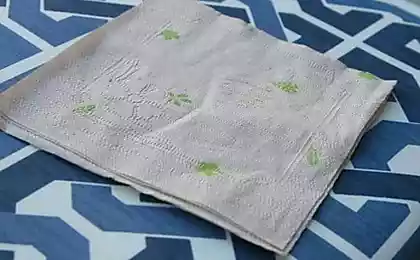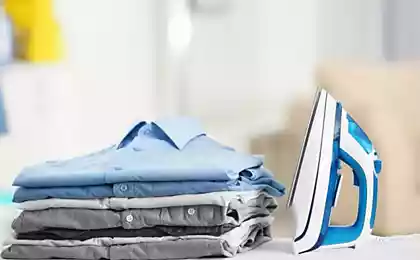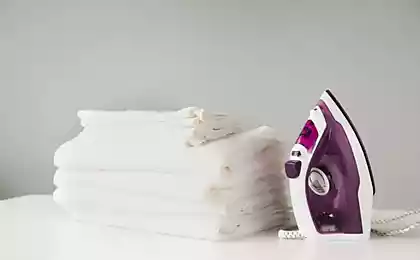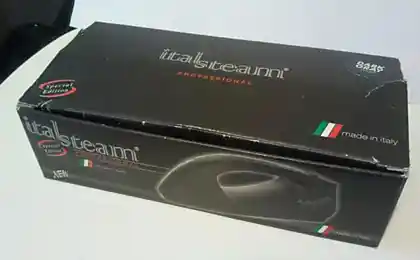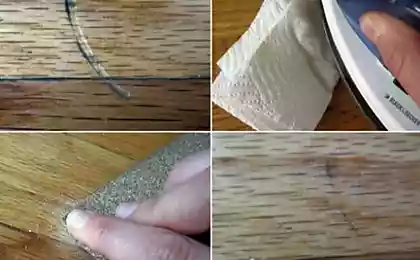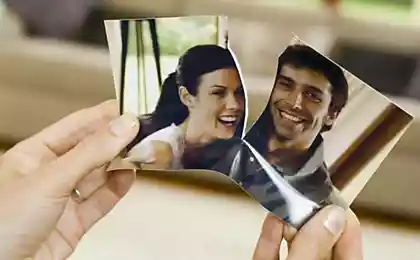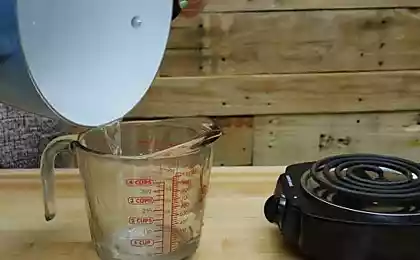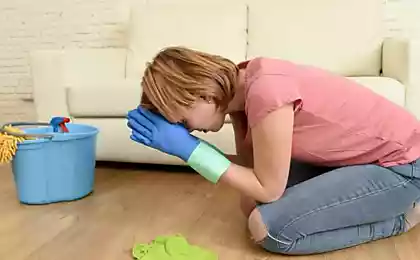5464
The history of iron (50 photos)
We are not facing problems that arose earlier.
He took an iron, stabbed cord and rushed.
Then, this was not the process of ironing was far more troublesome.
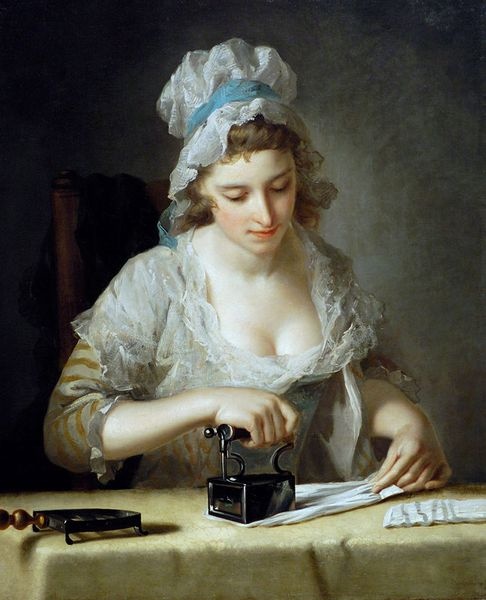
Pictured are some of them: curling irons, tailors' irons of different forms for draperies and certain places in suit and hat.
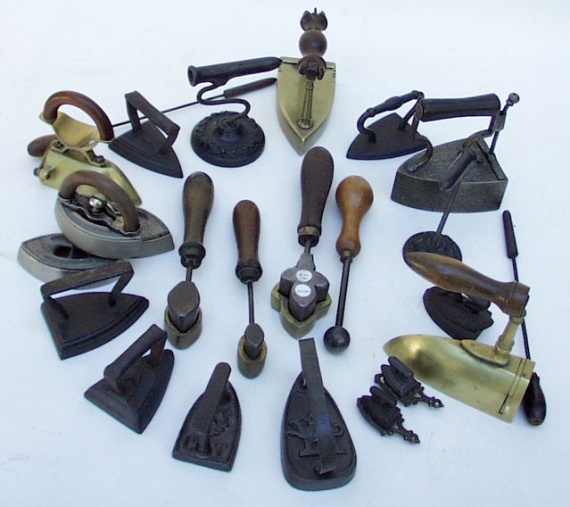
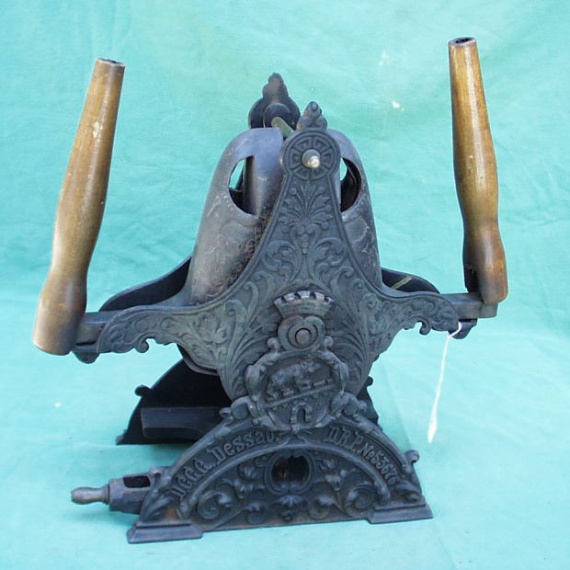
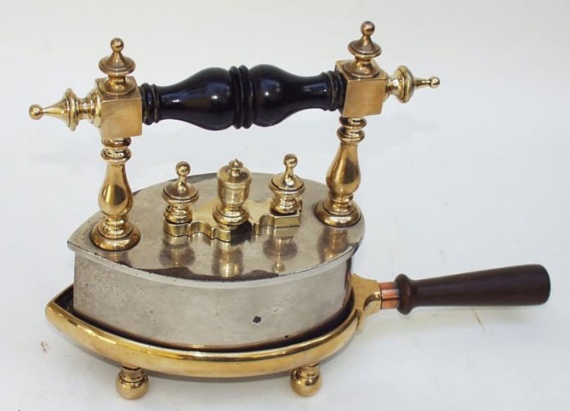

The first device for ironing, most likely, was a heavy flat stone. On the rock carvings of ancient Aztec ironing process is embodied as follows: spread a garment on a flat surface, pressed down on top of the stone, and left for a time under this pressure.
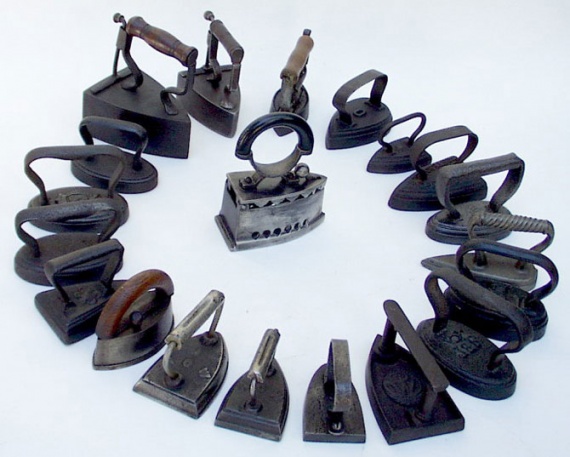
In the IV century BC Greeks invented a way of pleating garments with a metal rod like a rolling pin. Two centuries later, the Romans beat the wrinkles out of clothes metal hammer, heated to a high temperature.
The Russian was common way of ironing using Rubel and Valka:
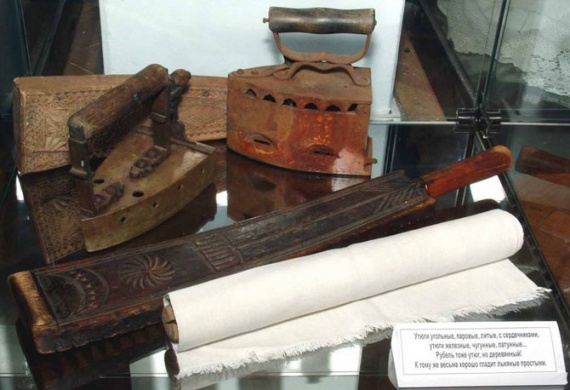
At exactly planed stick wound-dried sheets and rolled him on the countertop using corrugated board. This principle is still used in some ironing machine.
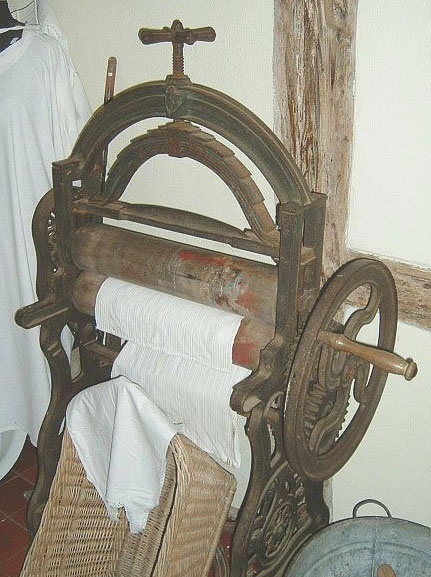
Brazier
Iron with coals inside appeared only in the middle of the XVIII century. Prior to that, the clothes ironed tool is very similar to a large frying pan. The closest was the precursor to the modern iron brazier of coals.
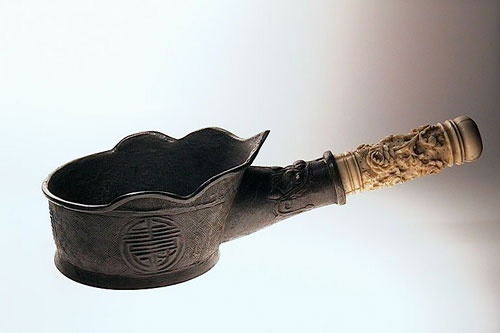
She looked much the same as an ordinary frying pan, inside the iron brazier with hot coals laid handle and a kind of "pan" began to drive on clothing. It's clear that this "iron" does not differ convenience and security: work with it was uncomfortable, sparks and small embers and then flew out of the fryer, leaving clothes opaline and holes.
Irons with a removable handle
Over time, we began to use two irons: one is heated on the stove, the other stroked.
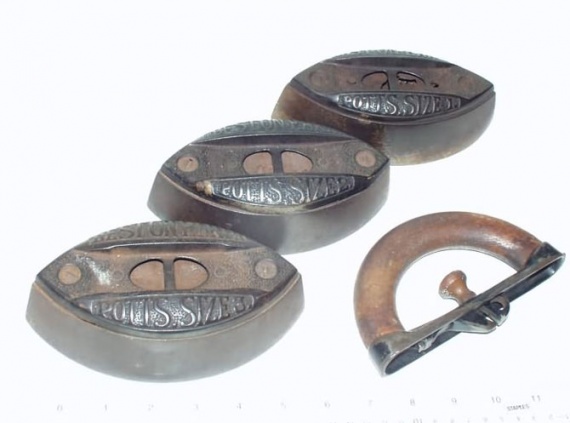
The simplest irons - heating. Before using the iron monoliths warmed up in the oven. Irons fabric weighed differently from one to 10 kilograms.
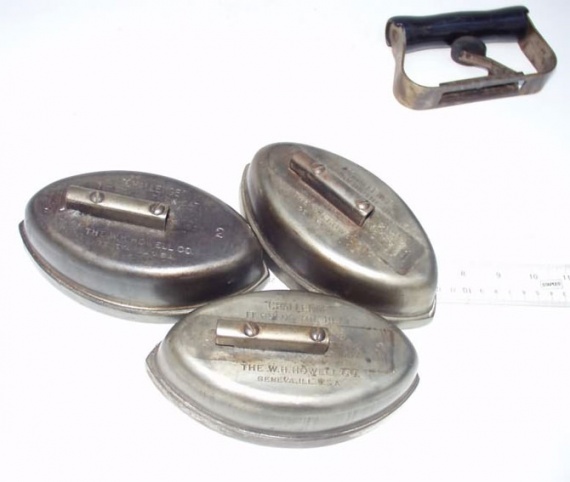
Another kind of antique irons - cast iron, warms up on an open fire or in a hot oven. They appeared in the XVIII century and still produced in our country, even in the 60s. XX century, in spite of the fact that for a long time been invented electric iron. This is because many homes have not yet been provided for the outlet.

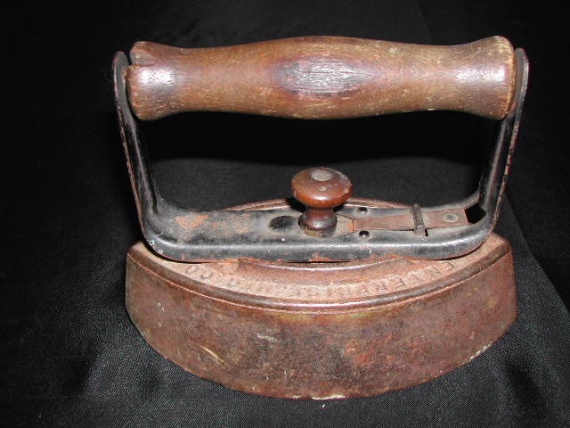
Cast-iron iron heated up for a long time - at least 30 minutes, and hot it was impossible to take without potholders. So long irons are improved: they were made párnymi - one removable handle two cast iron base. While one stroked, the second base is heated so that the process of ironing markedly accelerated.
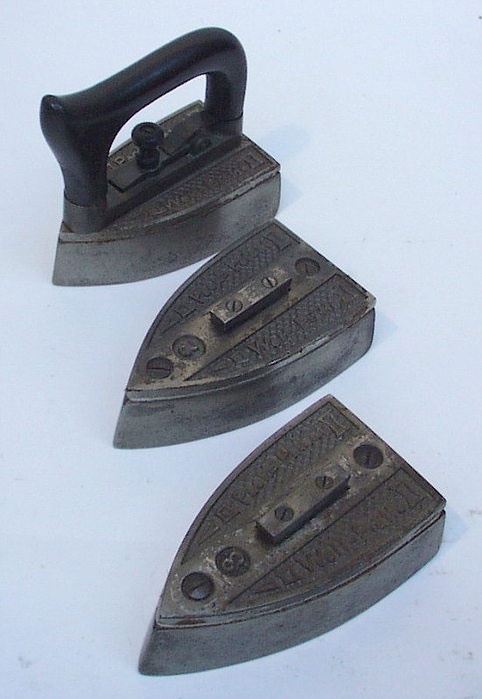

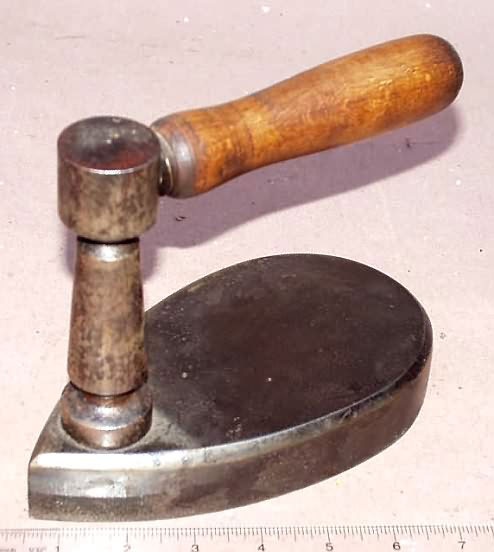
Coal
In place of the roasting pan with the handle came a steam iron. The coals in it were placed inside the body and the lid closed, and the top, for better traction, attach the pipe. To better heated coals, making the holes on the sides. Waving this iron back and forth, strengthened ventilation.
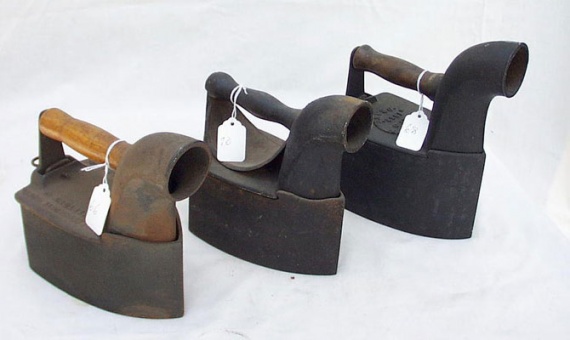

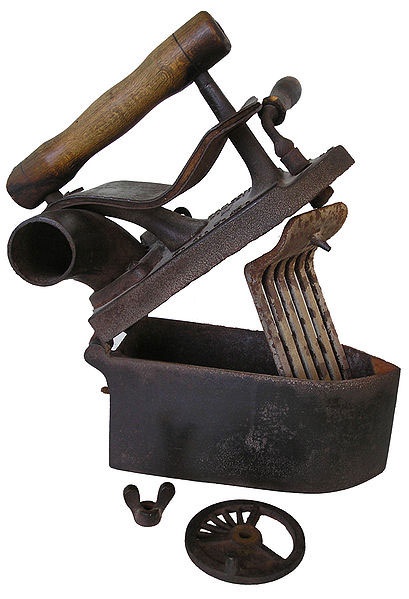
These irons do not differ convenience and safety: spark and small embers and then flew out of the brazier, leaving clothes opaline and holes.
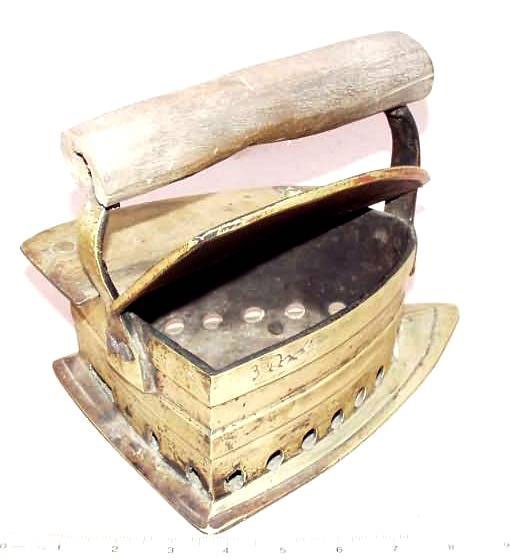
For better traction on the sides make a hole, sometimes even supplied with an iron pipe. To rekindle the embers have cooled, the holes blown or waving iron from side to side. As the irons were heavy, ironing becomes a real strength exercises for the muscles of the hands.


We are irons known from the XVII century, and in the West, most likely even earlier. The first written evidence of irons in use is dated February 10, 1636. The book cost of the royal court noted: "Blacksmith Ivashka Trofimov issued 5 Altyn, and he closed up for the money in Tsaritsyno Chamber iron iron." In the XVIII century it has been adjusted industrial production of "spirits" of irons: they made Demidov and some other foundries.
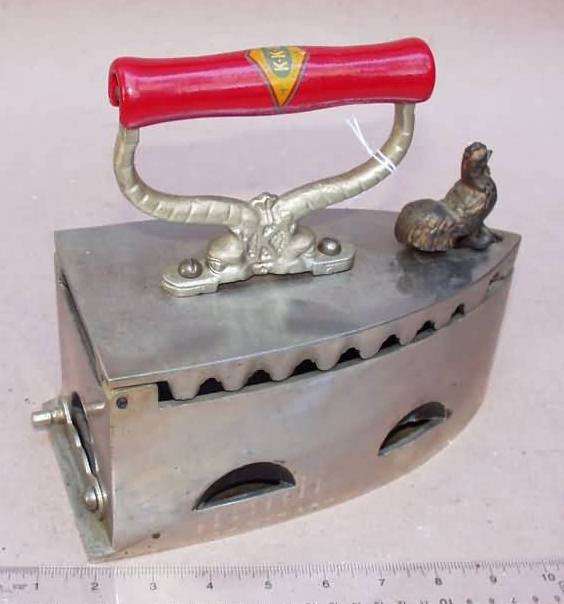
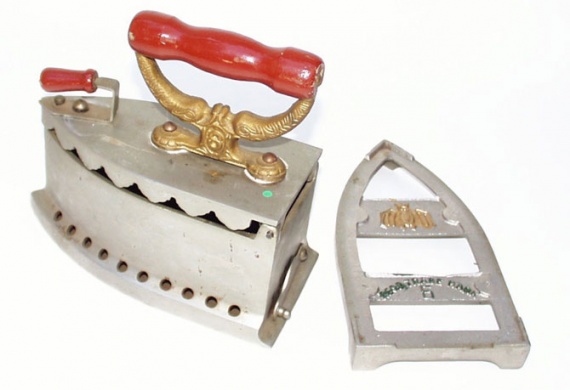
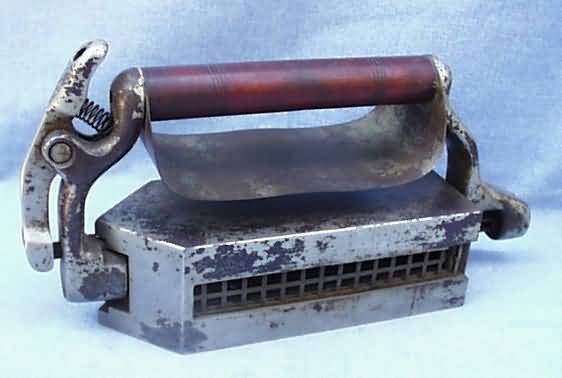

The large cast iron irons weigh up to 10 kg and destined for ironing coarse cloth. For proglazhivaniya delicate fabrics and fine details of clothes - collars, collar, lace - used small irons, measuring only half a palm.
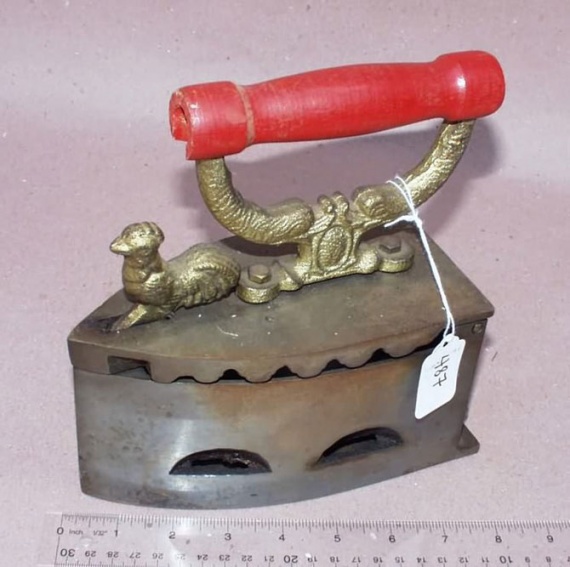
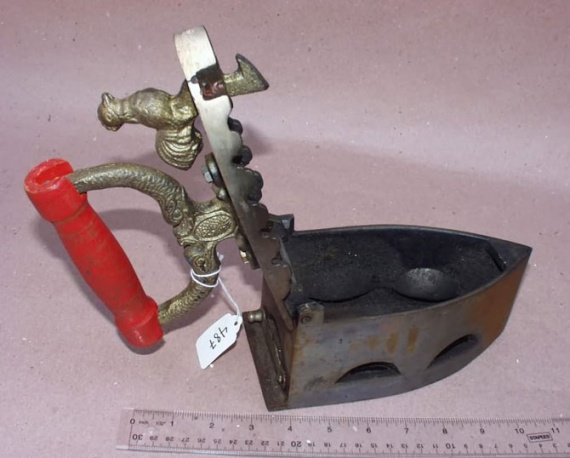
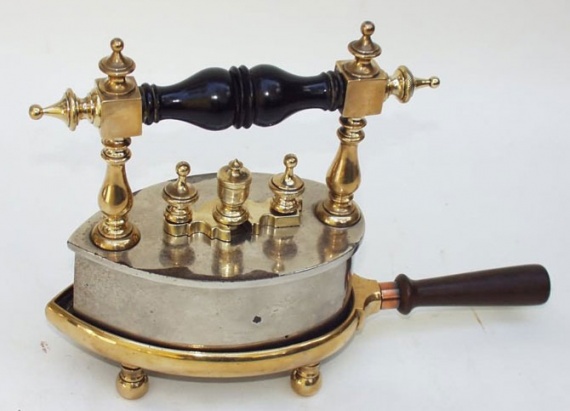
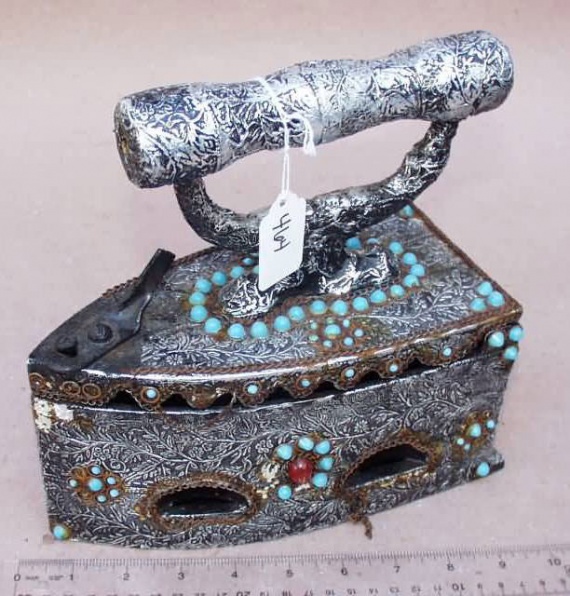
Iron-boxes, where to put the heated bar
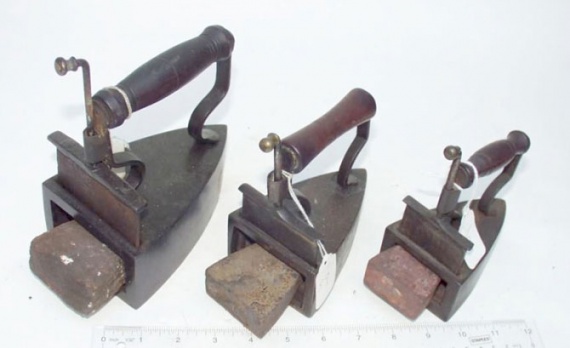
Instead of coal into the red-hot iron put more iron disc:

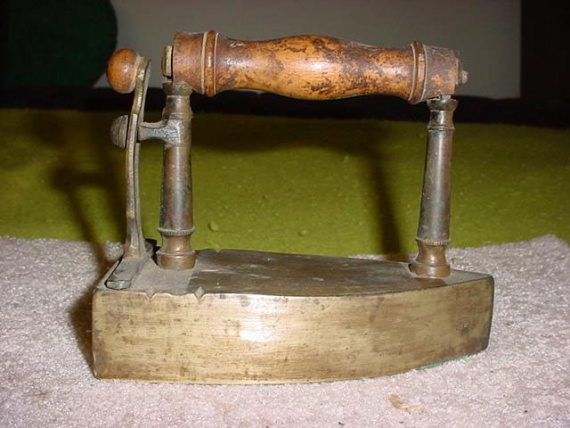
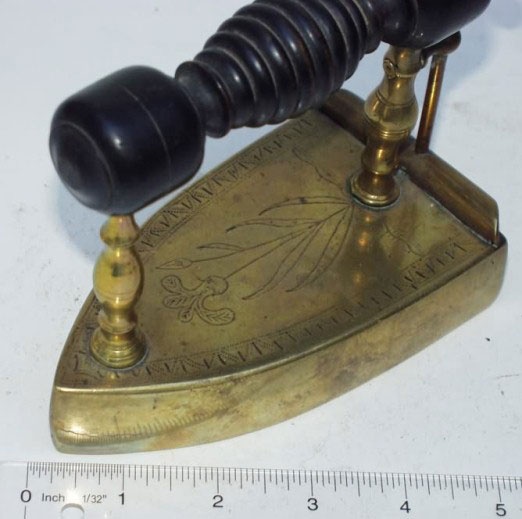


Irons with inserts for stand-gas heater:
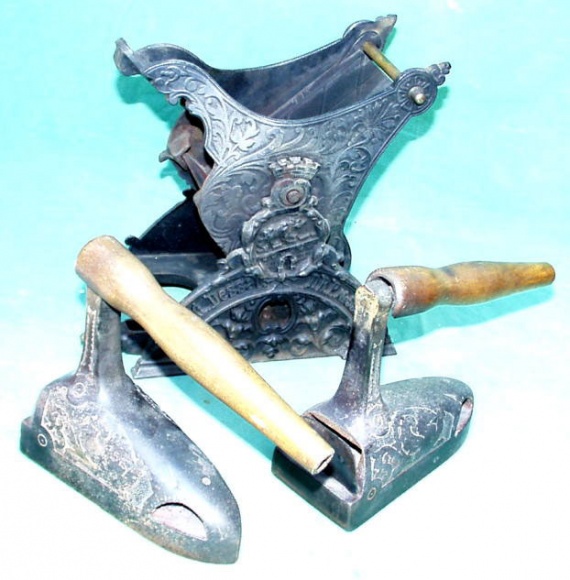
Gas irons
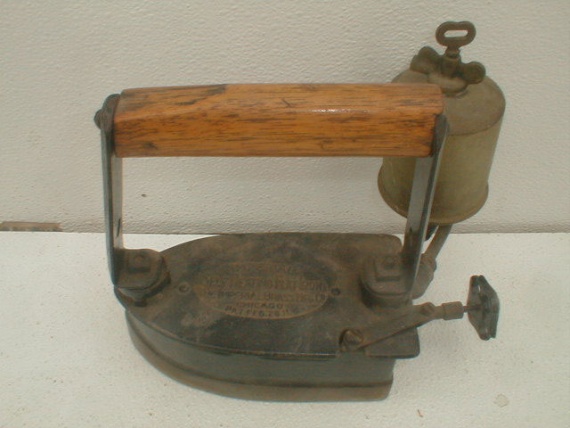
At the end of the XIX century began to produce gas irons. Their work was the same as that of the gas cookers irons heated up by burning gas. In the body of the iron was inserted a metal tube, the other end is connected to the gas cylinder, and located on the lid of the iron pump. With gas pump iron driven into the bowels, where burning is heated ironing sole. It is easy to imagine how dangerous were the irons: fault of their own are often leaking gas - with all the attendant consequences: explosions, fires and victims.
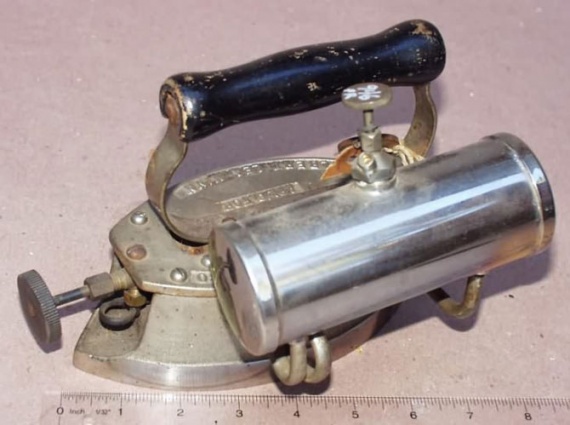

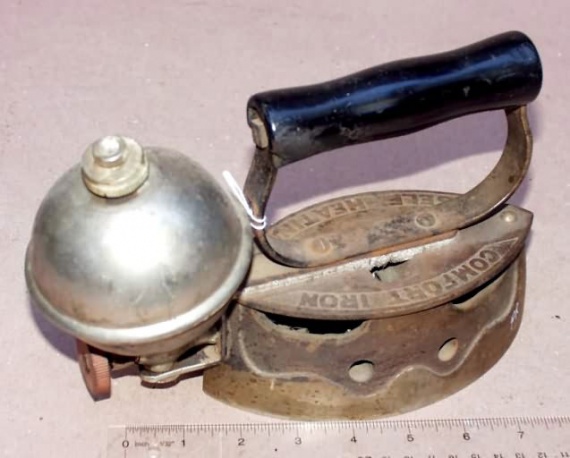
In the early XX century, it has become increasingly popular to use safer than gas, spirits iron. His ads were to be found in magazines in 1913. It was constructed on the basis of kerosene Lama: the surface of the iron heated spirits, which is poured in and ignited. The advantage of this iron was that he was warming up quickly, weighed not much, it can be used as a road version. Here are just a cost iron too expensive.
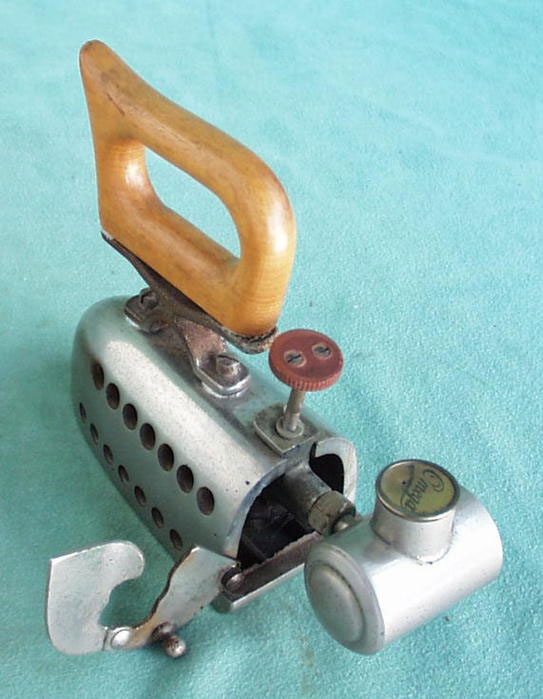


Professional Irons
Tailor
Goose should be severe, not less than one kilogram. Usually tailors had several irons of various sizes and weights. It was irons and up to 12 kilograms.

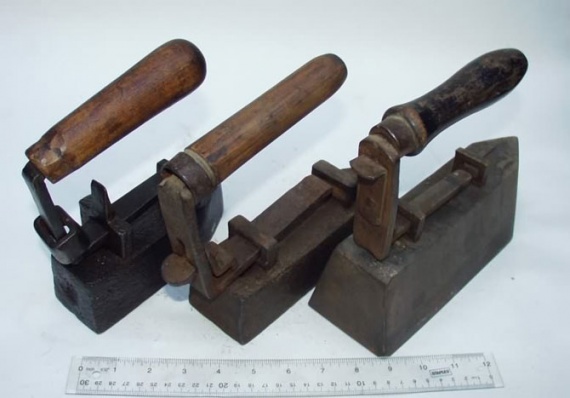
Tailor the case without iron is hard to imagine. Tailors have a saying: "Taylor fouls - iron to iron." Maybe it does not sound very nice, but reflects the true essence. Without sutyuzhki, streamers and other operations that must be done after each seam (for which there are special terms: razutyuzhit, press it, priutyuzhit, vyutyuzhit) - not a good thing soshёsh.
There is even a tailor term "whack", this is usually done at the edge of the board or thick place in the seam.
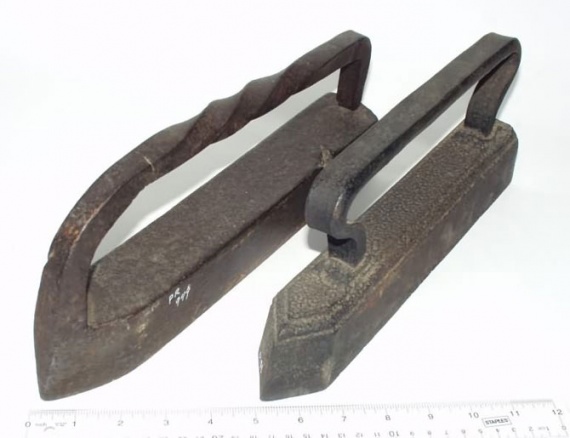
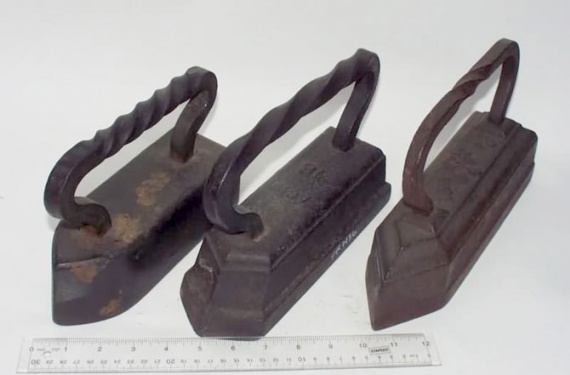
For sleeves

For jobs in the sleeves, shoulders, armpits, etc .:
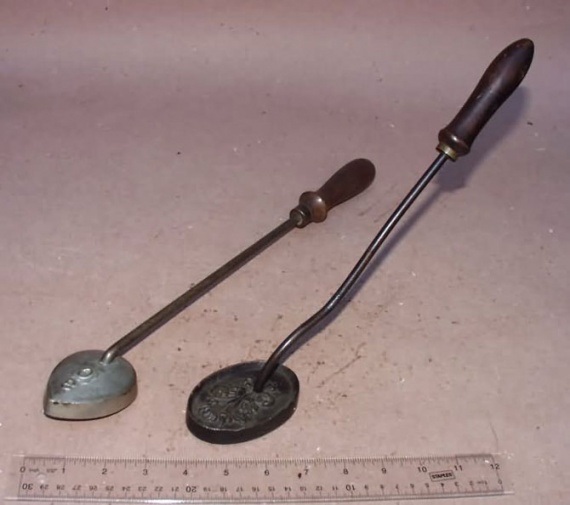
Source: nnm.ru
He took an iron, stabbed cord and rushed.
Then, this was not the process of ironing was far more troublesome.

Pictured are some of them: curling irons, tailors' irons of different forms for draperies and certain places in suit and hat.




The first device for ironing, most likely, was a heavy flat stone. On the rock carvings of ancient Aztec ironing process is embodied as follows: spread a garment on a flat surface, pressed down on top of the stone, and left for a time under this pressure.

In the IV century BC Greeks invented a way of pleating garments with a metal rod like a rolling pin. Two centuries later, the Romans beat the wrinkles out of clothes metal hammer, heated to a high temperature.
The Russian was common way of ironing using Rubel and Valka:

At exactly planed stick wound-dried sheets and rolled him on the countertop using corrugated board. This principle is still used in some ironing machine.

Brazier
Iron with coals inside appeared only in the middle of the XVIII century. Prior to that, the clothes ironed tool is very similar to a large frying pan. The closest was the precursor to the modern iron brazier of coals.

She looked much the same as an ordinary frying pan, inside the iron brazier with hot coals laid handle and a kind of "pan" began to drive on clothing. It's clear that this "iron" does not differ convenience and security: work with it was uncomfortable, sparks and small embers and then flew out of the fryer, leaving clothes opaline and holes.
Irons with a removable handle
Over time, we began to use two irons: one is heated on the stove, the other stroked.

The simplest irons - heating. Before using the iron monoliths warmed up in the oven. Irons fabric weighed differently from one to 10 kilograms.

Another kind of antique irons - cast iron, warms up on an open fire or in a hot oven. They appeared in the XVIII century and still produced in our country, even in the 60s. XX century, in spite of the fact that for a long time been invented electric iron. This is because many homes have not yet been provided for the outlet.


Cast-iron iron heated up for a long time - at least 30 minutes, and hot it was impossible to take without potholders. So long irons are improved: they were made párnymi - one removable handle two cast iron base. While one stroked, the second base is heated so that the process of ironing markedly accelerated.



Coal
In place of the roasting pan with the handle came a steam iron. The coals in it were placed inside the body and the lid closed, and the top, for better traction, attach the pipe. To better heated coals, making the holes on the sides. Waving this iron back and forth, strengthened ventilation.



These irons do not differ convenience and safety: spark and small embers and then flew out of the brazier, leaving clothes opaline and holes.

For better traction on the sides make a hole, sometimes even supplied with an iron pipe. To rekindle the embers have cooled, the holes blown or waving iron from side to side. As the irons were heavy, ironing becomes a real strength exercises for the muscles of the hands.


We are irons known from the XVII century, and in the West, most likely even earlier. The first written evidence of irons in use is dated February 10, 1636. The book cost of the royal court noted: "Blacksmith Ivashka Trofimov issued 5 Altyn, and he closed up for the money in Tsaritsyno Chamber iron iron." In the XVIII century it has been adjusted industrial production of "spirits" of irons: they made Demidov and some other foundries.




The large cast iron irons weigh up to 10 kg and destined for ironing coarse cloth. For proglazhivaniya delicate fabrics and fine details of clothes - collars, collar, lace - used small irons, measuring only half a palm.




Iron-boxes, where to put the heated bar

Instead of coal into the red-hot iron put more iron disc:





Irons with inserts for stand-gas heater:

Gas irons

At the end of the XIX century began to produce gas irons. Their work was the same as that of the gas cookers irons heated up by burning gas. In the body of the iron was inserted a metal tube, the other end is connected to the gas cylinder, and located on the lid of the iron pump. With gas pump iron driven into the bowels, where burning is heated ironing sole. It is easy to imagine how dangerous were the irons: fault of their own are often leaking gas - with all the attendant consequences: explosions, fires and victims.



In the early XX century, it has become increasingly popular to use safer than gas, spirits iron. His ads were to be found in magazines in 1913. It was constructed on the basis of kerosene Lama: the surface of the iron heated spirits, which is poured in and ignited. The advantage of this iron was that he was warming up quickly, weighed not much, it can be used as a road version. Here are just a cost iron too expensive.



Professional Irons
Tailor
Goose should be severe, not less than one kilogram. Usually tailors had several irons of various sizes and weights. It was irons and up to 12 kilograms.


Tailor the case without iron is hard to imagine. Tailors have a saying: "Taylor fouls - iron to iron." Maybe it does not sound very nice, but reflects the true essence. Without sutyuzhki, streamers and other operations that must be done after each seam (for which there are special terms: razutyuzhit, press it, priutyuzhit, vyutyuzhit) - not a good thing soshёsh.
There is even a tailor term "whack", this is usually done at the edge of the board or thick place in the seam.


For sleeves

For jobs in the sleeves, shoulders, armpits, etc .:

Source: nnm.ru


